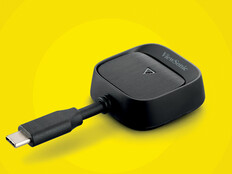Despite the benefits of a thriving esports program in smaller or more rural schools, these institutions often face unique challenges getting clubs or teams started. When facing hurdles such as a remote location or limited resources, here’s how school leaders can adapt:
Make Esports Possible for Any School, Anywhere
Location plays a big role in the creation of an esports program.
In rural areas, it’s difficult for student athletes to travel to compete. Many already have long bus rides to and from school, and traveling to another district isn’t always feasible. Esports athletes, however, can compete online.
This connection is helping bring charter schools together. Charter school leaders are reaching out to one another within their communities and beyond to organize competitions for their esports students. This type of community comes naturally to many charter school students, who are used to networking around the world as part of their education.
However, some schools face challenges with the internet itself. Connections aren’t always fast or reliable in rural areas, which can impact a team’s ability to succeed. Esports is a game of milliseconds, and even a slight lag can ruin students’ chances of competing. It may be helpful for schools to perform a wireless site survey before building out their esports program. This could help them determine where they have the best connection or how to make improvements to their network before investing heavily in esports equipment.
RELATED: Optimize K–12 Wi-Fi with these formulas and network upgrades.
Another solution for schools with unreliable connectivity is Network as a Service. NaaS partners often integrate with major ISPs to provide as-needed support for schools.
Successful Esports Programs Take Teamwork and Adaptability
In their infancy, esports programs often face staffing difficulties, especially when they’re started by a single, eager staff member. Trying to run an esports program solo can quickly lead to burnout, so it’s important to build relationships within your school and community to get a successful program off the ground.
For example, if new leaders and coaches work with teachers, they’ll often find that esports lessons can be built into existing classes, such as journalism or media classes. Esports pioneers should also connect early with the school’s IT and facilities departments. IT teams will have insights on network capabilities and wireless site surveys, while facilities teams can help find and upgrade a space.
Click the banner below for technology solutions for your school’s esports arena.











![[title]Connect IT: Bridging the Gap Between Education and Technology](http://www.edtechmagazine.com/k12/sites/default/files/articles/2014/05/connectit.jpg)




